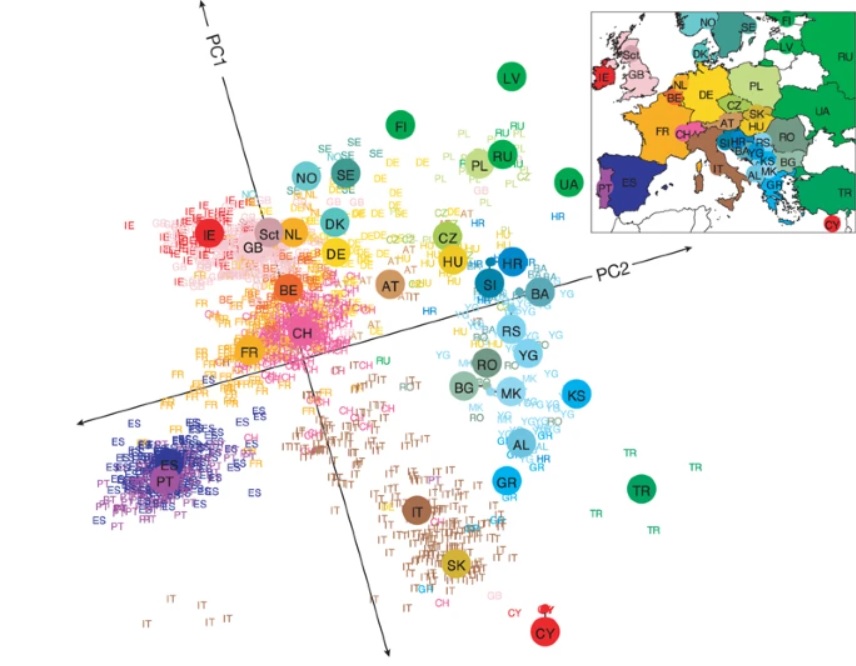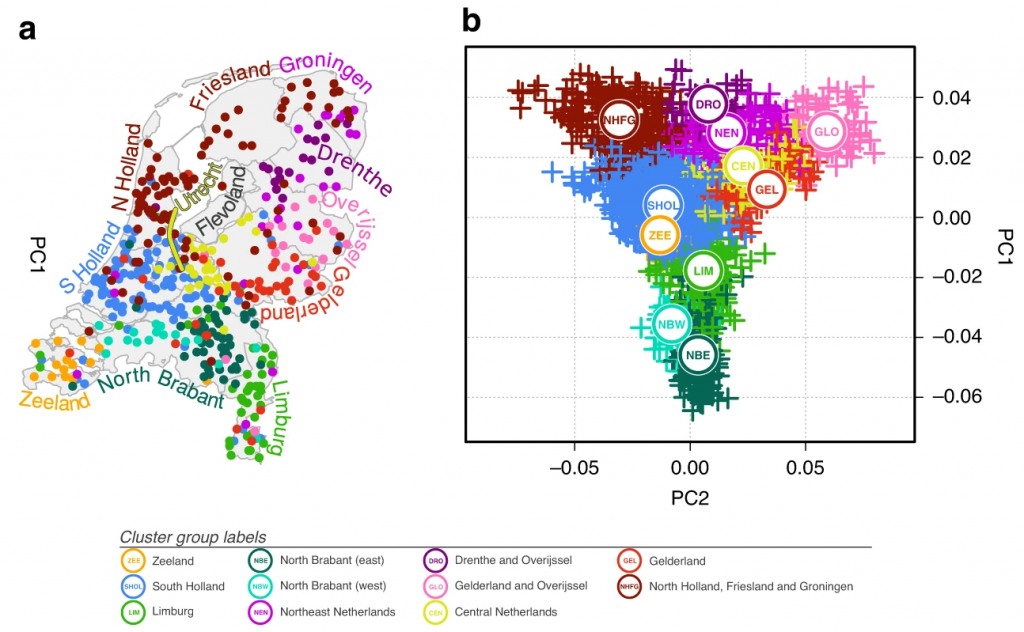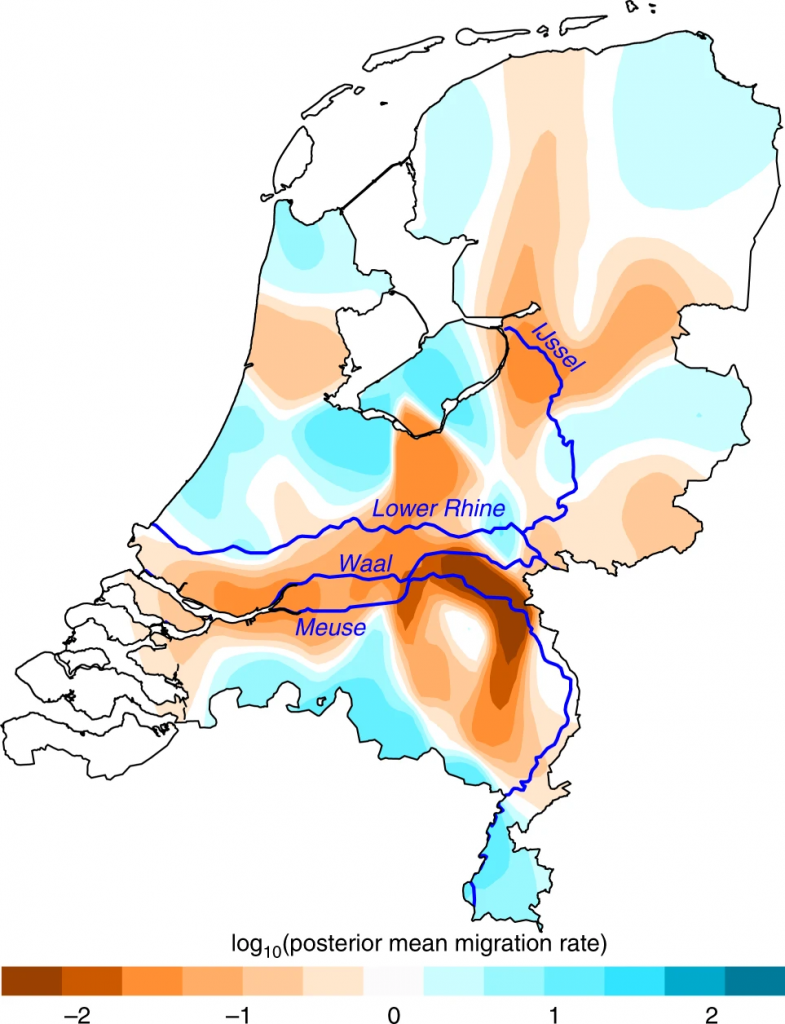This post is also available in Dutch.
The Netherlands has many past tales to tell. With the help of DNA from people whose ancestors resided here, we can know in more detail what happened in the past. This blog will show you how.
Since the first groups of Homo Sapiens left their original habitat in Africa – the oldest fossil, dated about 300,000 years ago, was found in Morocco – our ancestors spread and settled across the seven continents over the span of thousands of years.
Throughout the years, each piece of land in this world of ours has witnessed all sorts of human movement: Some people came and settled in one place, others moved to a nearby town, and still others moved to more distant regions or even to a new continent. Some of these journeys are well-documented, whereas others not so much. But nowadays we don’t need to depend solely on historical records to get to know more about the migration patterns in the pieces of land that we call regions or countries. By looking at our DNA, we are able to find out about our ancestors’ journeys and the people they interacted with. But how?
DNA as an Ancestry ID
Each person carries their very own unique DNA, which overlaps considerably with that of their family members, somewhat with other people with the same geographical origins, and increasingly less with people whose ancestors come from farther away. When you look at the DNA from people with different origins, you can measure their ancestral differences, usually in the form of the ancestry plots as in the figure bellow.

Image courtesy of Nature.
In this plot, we measure the ancestral differences between different European populations, which tends to be proportional to the geographical distance between their countries. You can also see that some populations overlap more than others, despite the existence of borders between the countries. That reflects how closely in-contact their ancestors were in the past. But what else can we find if we zoom in on one of these countries? What does the ancestry map of the Dutch provinces look like?
Dutch ancestors were attached to their provincial roots, but also in touch with their neighbors
A recent study looking at the DNA of over a thousand individuals of Dutch ancestry shows, in the figures displayed bellow, that with a few exceptions, their ancestors tended to remain in their home provinces. They also observed that the ancestral differences between the different provinces resemble their geographical disposition, except for North Brabant and Limburg. Interestingly, ancestors from Limburg tend to be more related to the other provinces, despite North Brabant being geographically closer.

Image courtesy of Nature.
This study showed that the reason for that mismatch between geography and ancestry resides in the ancestral affinity with neighbor countries. Whereas North Brabant ancestors were more in touch with their Belgian neighbors, those from Limburg and other provinces were more related with neighbors from the German side. Apparently, the exchange with German ancestors was particularly intense in the 11th century, although the reasons for that remain to be found.
This team of researchers also found that ancestors from North Holland, Friesland and Groningen were particularly associated with Danish ancestors, likely due to the Viking raids in coastal areas spanning the 9th and 10th centuries.
Dutch ancestors preferred to move East/West rather than North/South
The same study estimated from DNA evidence the migration patterns and mixing between ancestors from different provinces. They found that back then, Dutch ancestors tended to move to Eastern or Western provinces, rather than moving North or South. The figure bellow shows that this was very likely due to the presence of Dutch rivers, mainly the Rhine, Waal, and Meuse, which limited people’s movement: Essentially, people who lived near rivers were less likely to migrate.

Image courtesy of Nature.
It’s impressive how, just by looking to our DNA, we can learn so much about our past. Even some of the most hidden mysteries of history may be unraveled. The same way scientists used DNA to uncover the footsteps of Dutch ancestors, we can also discover the journeys of other people’s ancestors around the world, and learn a bit more about how we came to be.
Original language: English
Author: João Guimarães
Buddy: Monica Wagner
Editor: Rebecca Calcott
Translator: Felix Klaassen
Editor Translation: Floortje Bouwkamp
Credits: Top image courtesy of WikiImages and Pixabay (CC0 1.0).
